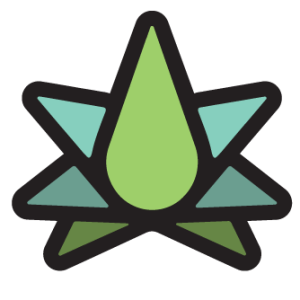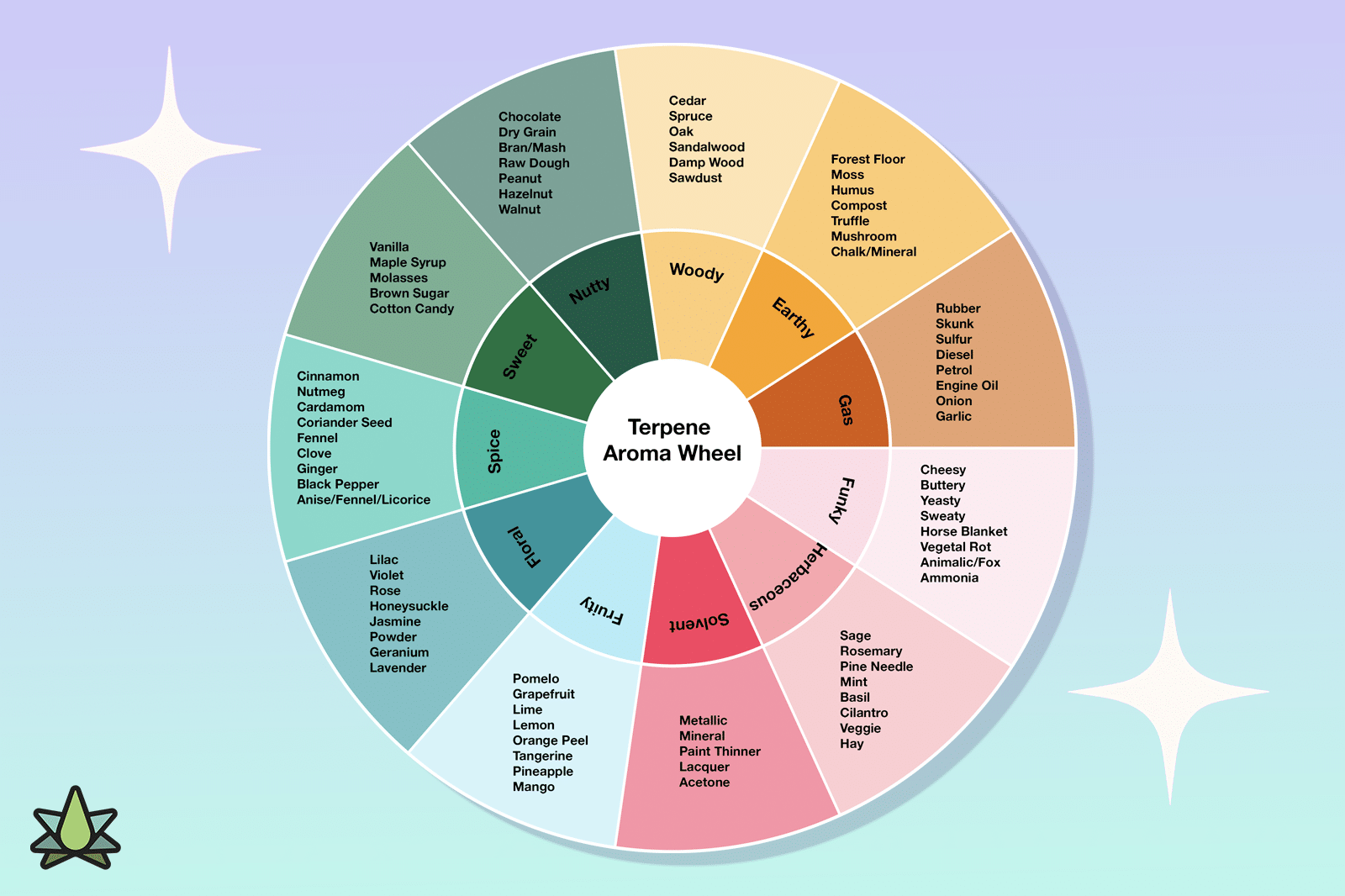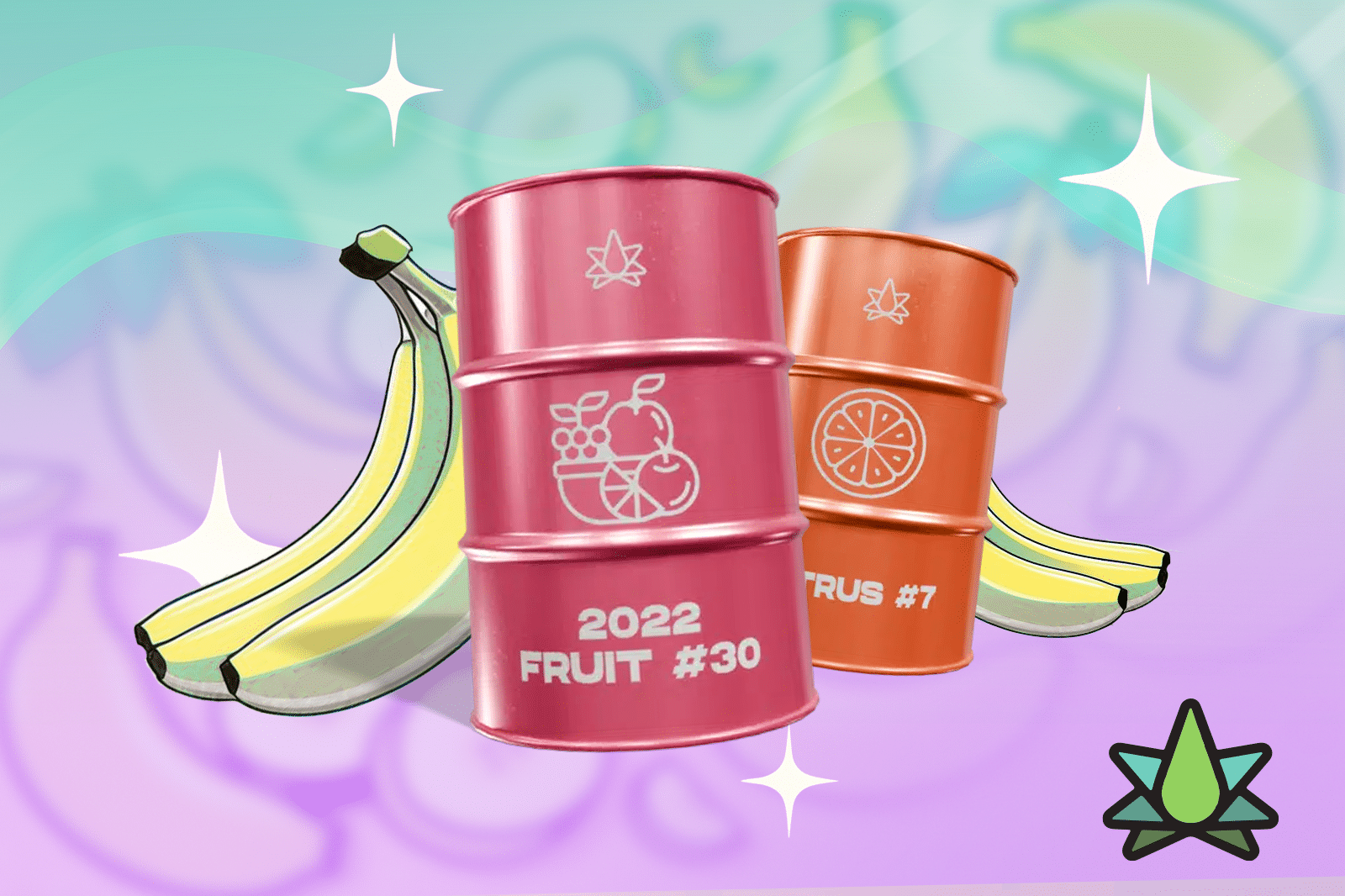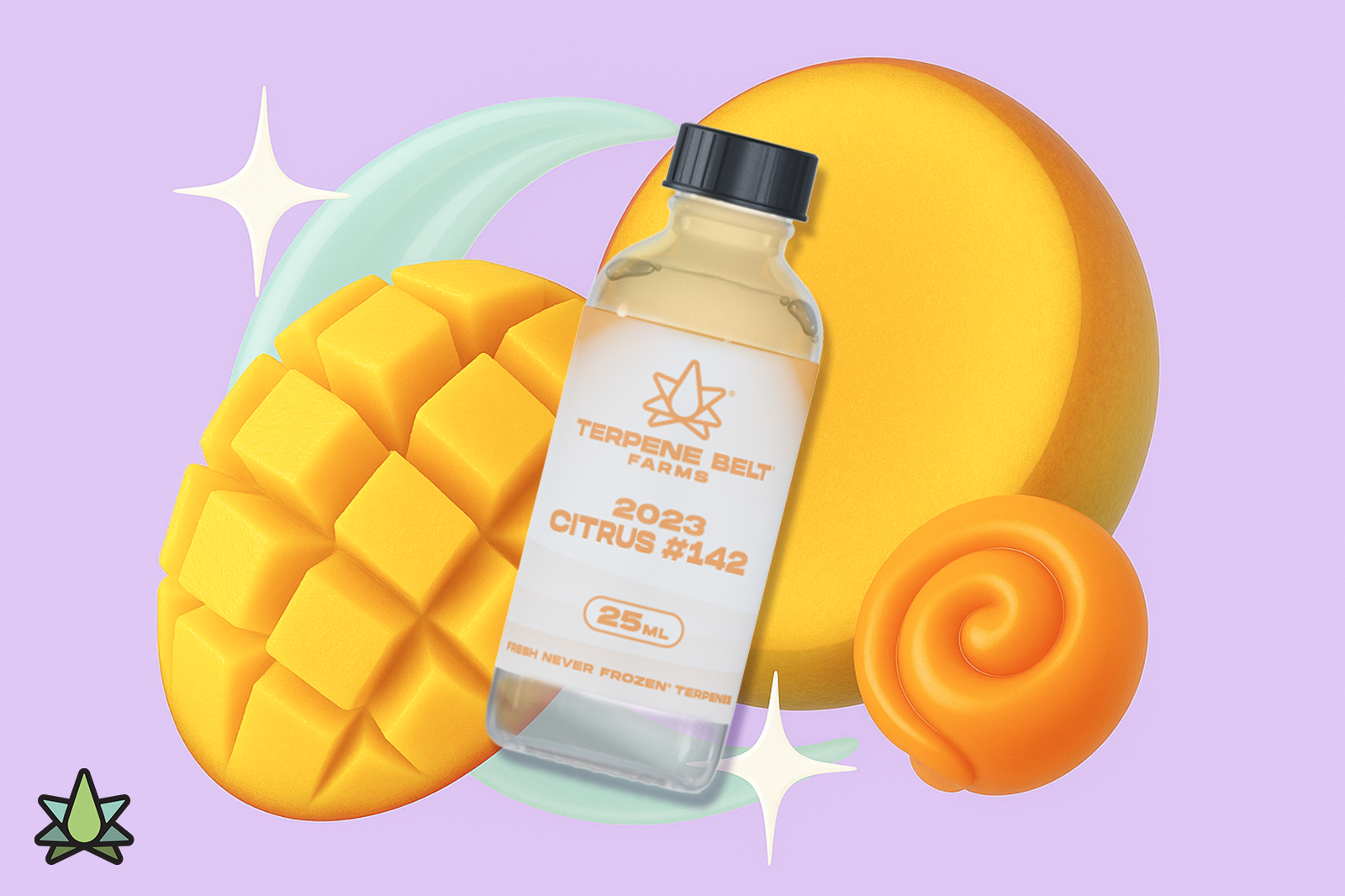Terpenes are a critical differentiation point for product developers across multiple industries. Cannabinoids often dominate industry conversations, but forward-thinking manufacturers and consumers understand that terpenes significantly impact product efficacy, sensory experience, and market positioning.
This technical guide provides a comprehensive overview of terpene consumption methodologies, formulation parameters, and application-specific considerations based on extensive lab tests and commercial implementation experience.
Note for Consumers: While this guide is primarily for product developers, it contains valuable information for enthusiasts seeking a deeper understanding of terpene consumption methods. Look for the “Consumer Perspective” callouts throughout the article for specific information relevant to personal use.
Key Takeaways
- Terpene bioavailability varies significantly across delivery systems, hence the need for tailored formulation strategies for efficacy and user experience.
- Effective terpene delivery—especially via vaporization and edibles—requires meticulous attention to concentration, hardware compatibility, and thermal stability to avoid degradation, off-flavors, or safety issues.
- Developers need to consider sensory goals, technical limitations, and regulatory thresholds (e.g., FDA GRAS limits) when integrating terpenes into commercial products like edibles, beverages, and concentrates.
Understanding Terpene Bioavailability Across Delivery Systems
Terpene bioavailability, i.e., the proportion of a compound that enters circulation when introduced to the body, varies depending on the consumption method. This variation necessitates consumption-specific formulation approaches to achieve consistent sensory experiences and functional effects.
Vapor-based terpene delivery through inhalation has the highest bioavailability. This is because these volatile compounds can bypass first-pass metabolism when absorbed through the pulmonary alveoli.
Different terpenes demonstrate unique volatilization curves and temperature-dependent degradation profiles, creating formulation challenges that require precise temperature control during manufacturing and consumption.
By contrast, oral consumption methods typically yield significantly lower bioavailability (4-12% for most terpenes) due to first-pass metabolism in the digestive environment. The reduced efficiency necessitates higher concentrations or specialized delivery mechanisms such as nanoemulsions to achieve the desired sensory and functional outcomes.
Topical application presents entirely different absorption dynamics, with terpene permeability highly dependent on molecular weight and lipophilicity. Smaller monoterpenes like limonene demonstrate significantly greater transdermal penetration than larger sesquiterpenes like caryophyllene, requiring profile-specific formulation protocols for dermal products.
These bioavailability differences form the foundation for application-specific formulation strategies explored throughout this guide.
For a deeper understanding of how terpenes interact with different systems, our insights on the entourage effect article shed more light on the synergistic relationship between terpenes and cannabinoids.
|
Delivery Method |
Typical Bioavailability Range | Primary Absorption Pathway | Onset Time |
Duration |
| Vaporization | 34-56% | Pulmonary | 1-3 minutes | 1-3 hours |
| Sublingual | 12-35% | Oral mucosa | 5-15 minutes | 2-4 hours |
| Oral (Edibles) | 4-12% | Gastrointestinal | 30-90 minutes | 4-8 hours |
| Topical | 1-5% (site-specific) | Transdermal | 15-45 minutes | 2-6 hours |
Consumer Perspective: Understanding these bioavailability differences helps set realistic expectations when selecting terpene products for personal use. For immediate effects and a strong aromatic experience, vaporization offers the most direct pathway.
Sublingual products provide a good balance between absorption efficiency and ease of use. Edibles and beverages deliver the longest effect duration but with more subtle initial effects, making them ideal for extended experiences. Topicals work best for localized effects rather than systemic benefits.
Vaporization: Optimizing Terpene Delivery Through Inhalation
Vaporization is the most efficient terpene delivery method in terms of bioavailability and sensory experience. However, this approach presents unique formulation challenges due to heat-induced degradation and terpene interactions with hardware components.
Technical Formulation Parameters for Vaporization
As such, the most critical technical consideration for vapor applications is balancing terpene concentration with functional efficacy and hardware compatibility. Commercial vaporization products typically maintain terpene concentrations between 5% and 15% (w/w) for optimal performance, with premium products leaning toward the higher end of this range.
Exceeding 15% terpene concentration introduces several technical challenges, such as:
- Accelerated oxidation leading to shorter shelf life and potential sensory degradation
- Increased viscosity variation affecting hardware performance
- Potential for throat irritation and sensory harshness
- Compatibility issues with certain cartridge materials
When formulating vapor applications, temperature control is critical for preserving terpene integrity. Different terpenes exhibit varying volatilization points, with most commercially relevant compounds beginning to volatilize between 120°C and 180°C (248°F–356°F).
Exceeding 230°C (446°F) creates a significant risk of thermal degradation, producing off-flavors and potentially harmful byproducts. Careful hardware selection and heating element calibration are necessary to maintain optimal vaporization.
The specific composition of a terpene profile also influences optimal vaporization parameters. For example, profiles rich in myrcene (found in many “indica-dominant” strains) often perform better at slightly lower temperatures due to myrcene’s relatively low boiling point of 166-168°C (331-334°F).
Conversely, profiles dominated by caryophyllene may benefit from slightly higher temperature settings to completely volatilize. This profile-specific optimization creates opportunities for differentiated product performance, particularly in temperature-controlled vaporization devices.
For product developers seeking to implement vaporization applications, our Premium Oils Sample Pack offers an efficient method for testing multiple profiles across different hardware configurations. This allows technical teams to evaluate sensory performance and hardware compatibility through a systematic benchmarking process.
Our R&D Vape Formulation Best Practices Guide provides additional technical guidance for vapor applications, including detailed mixing protocols and stability testing parameters.
Consumer Perspective: For individuals using vaporization devices, temperature control is the most crucial factor for optimizing terpene experiences.
Lower temperatures (320-350°F/160-177°C) preserve delicate monoterpenes like pinene and limonene, creating brighter, more energetic effect profiles with pronounced flavor. Higher temperatures (370-390°F/188-199°C) activate less volatile terpenes like linalool and caryophyllene, generating more sedative effect profiles with deeper flavor notes.
Most quality vaporizers allow temperature adjustment, so experiment to find your ideal range for different terpene profiles. Our guide on preserving terpenes offers additional insights for cannabis enthusiasts seeking to maximize terpene preservation during consumption.
Hardware Compatibility Considerations
The hardware directly impacts product stability and performance when incorporating terpenes into vaporization products. Through extensive testing with various cartridge materials, we’ve observed that terpene-rich formulations (>10% concentration) can interact negatively with certain polyethylene and low-grade plastic components, causing leaching that affects flavor and safety.
Ceramic and glass cartridges with high-grade metals demonstrate superior compatibility with high-terpene formulations, preserving sensory integrity and ensuring longer shelf stability. Hardware consideration is crucial when utilizing native cannabis-derived terpenes, where preserving the complete sensory profile is a key product differentiation aspect.
Sublingual Administration: Balancing Bioavailability and Safety
Sublingual administration is an intermediate bioavailability pathway that bypasses the first-pass metabolism. This method has gained significant traction in wellness applications, particularly with users seeking functional benefits without combustion or vaporization.
Technical Formulation Parameters for Sublingual Products
Sublingual terpene products require careful concentrations to balance efficacy with safety and sensory experience. While direct contact with undiluted terpenes can irritate, properly formulated terpene products can safely deliver compounds directly to the bloodstream through the capillary bed.
Commercial sublingual products typically maintain terpene concentrations between 0.5% and 2.0% (w/w), with most products clustering toward the lower end of this range. These concentrations balance perceptible flavor profiles with safety considerations for direct contact with the mucous membrane.
Carrier selection is another critical formulation variable for sublingual applications. MCT (medium-chain triglyceride) oil provides excellent terpene solubility while minimizing sensory interference, making it an ideal carrier for sublingual terpene delivery. However, when formulated correctly, specialized nanoemulsions using surfactants like polysorbate 80 or lecithin can also enhance bioavailability and organoleptic properties.
For product developers of sublingual formulations, achieving the ideal concentration begins with accurately diluting concentrated terpene inputs. Our Terpene Mixing Calculator can help achieve target concentrations across different product formats and ensure consistent reproducibility across production batches.
Consumer Perspective: Proper dilution is essential when creating sublingual terpene products at home. Never place undiluted terpenes under the tongue, as this can cause irritation or chemical burns.
For DIY sublingual preparations, maintain concentrations below 1% by thoroughly mixing terpenes with a high-quality carrier oil like MCT. Hold the diluted mixture under your tongue for 60-90 seconds before swallowing for maximum absorption.
The sensory experience is an excellent way to learn terpene profiles. You’ll notice the initial flavor notes followed by secondary notes as the compounds begin absorbing. Individuals sensitive to strong flavors can start with fruity and sweet terpene profiles rather than the more pungent gas or pine varieties.
Infused Edibles & Beverages: Overcoming Bioavailability Challenges
Oral consumption through edibles and beverages presents the greatest technical challenge for terpene delivery due to lower bioavailability and complex integration requirements. However, these formats also offer significant market opportunities when formulated correctly.
Technical Formulation Parameters for Edibles
Terpene integration in edible products requires balancing sensory impact with regulatory compliance and stability considerations. Commercial edible products typically have terpene concentrations between 0.05% and 0.5% (w/w) in final formulations, with most products targeting the 0.1-0.2% range for optimal sensory performance.
This concentration range reflects several technical considerations:
- Regulatory compliance is a primary concern, as many terpenes have FDA limits for food applications under GRAS (Generally Recognized As Safe) frameworks, typically ranging from 15-50 ppm, depending on the specific compound.
- Sensory threshold optimization must also be considered, since most terpenes reach optimal flavor impact between 0.05 and 0.2%, with higher concentrations often creating overwhelming or unbalanced sensory profiles.
- Additionally, thermal stability requirements play a crucial role, as many edible manufacturing processes involve heat that can degrade volatile terpenes, necessitating adjusted input concentrations.
- Timing of terpene integration is another critical formulation variable for edible applications. Introducing terpenes after thermal processing preserves their integrity, but requires specialized mixing equipment to ensure homogeneous distribution.
- When pre-process integration is necessary, encapsulation technologies like cyclodextrin complexation or specialized emulsions can significantly improve terpene retention.
- The specific terpene profile selection also influences edible formulation compatibility. Profiles rich in limonene and linalool typically demonstrate better thermal stability than myrcene-dominant profiles, making these more suitable for baked goods and other heat-processed edibles. For cold-processed applications, a wider range of profiles can be successfully integrated without significant degradation.
Consumer Perspective: Understanding concentration is crucial when experimenting with terpenes. Start with extremely dilute applications— just 1-2 drops of pre-diluted terpenes (already at 10% concentration or less) per cup of oil or butter for cooking applications.
Add terpenes at the end of the cooking process to preserve their aromatic qualities. Cold applications, such as dressings or no-bake desserts, offer better terpene preservation than high-heat methods.
Sweet and fruity terpene profiles generally pair better with desserts, while herbal profiles complement savory dishes. For creative culinary applications, we offer guidance on terpene-infused cooking oils and terpene-infused baking recipes to help DIY enthusiasts explore.
Technical Formulation Parameters for Beverages
Beverage formulation presents unique terpene integration challenges due to water solubility issues and interactivity with other beverage components. Commercial beverage applications typically maintain terpene concentrations between 0.01 and 0.1% (w/w), with the higher range reserved for concentrated products intended for dilution.
The main challenge in beverage applications is creating stable emulsions that maintain homogeneity throughout shelf life. However, several approaches demonstrate commercial viability:
| Technique | Description | Typical Application |
| Nanoemulsification | Creating droplets below 100nm through high-pressure homogenization or ultrasonication | Ready-to-drink beverages requiring long-term stability |
| Carrier Systems | Utilizing water-compatible carriers like polysorbate-based solutions | Concentrated beverage additives and mixers |
| Cyclodextrin Complexation | Forming molecular inclusion complexes that increase apparent water solubility | Premium applications where taste neutrality is critical |
For beverage developers, profile selection is crucial due to varying water compatibility. Profiles with higher concentrations of water-soluble terpenes like terpineol and linalool typically display better integration than those dominated by highly hydrophobic compounds like myrcene or pinene.
Our collection offers beverage-optimized profiles that balance sensory performance with improved formulation compatibility. These profiles address the technical challenges of liquid applications while maintaining authentic flavor profiles. Our detailed guidance on enhancing beverages with cannabis terpenes provides additional technical considerations for product developers in this category.
Consumer Perspective: Creating terpene-infused beverages at home requires careful consideration of water-compatibility issues. Since terpenes are oil-soluble compounds, they won’t dissolve directly in water-based drinks.
For home mixologists, the simplest approach is to create a terpene-infused simple syrup. First, dissolve a small amount of terpenes (1-3 drops per cup) in a high-proof neutral spirit like vodka or Everclear, then mix this into warm simple syrup.
The resulting flavored syrup can be added to cocktails, sparkling water, or other beverages. Alternatively, for milk-based drinks, add 1-2 drops of terpenes to a tablespoon of cream before incorporating into the larger beverage. Start with small amounts—terpenes are potent flavor compounds, and a little goes a long way.
Flower and Concentrate Infusion: Advanced Techniques
For manufacturers working with cannabis flower or concentrates, terpene infusion is a specialized exercise that requires careful technical expertise to maintain product integrity and compliance.
Technical Parameters for Flower Infusion
Flower infusion typically targets terpene enhancement between 1-4% (w/w) above baseline levels, with premium products often utilizing the higher end of this range. This balances sensory impact with absorption efficiency while avoiding oversaturation that can create uneven distribution or excessive runoff.
Temperature management is also a critical variable in flower infusion processes. Applying terpenes to flower material above 26°C (78°F) increases the absorption rate but risks degrading more volatile compounds, while applying below 21°C (70°F) may result in inadequate penetration and surface pooling.
Maintaining precise environmental conditions during infusion directly impacts product consistency and terpene retention rates.
The specific infusion methodology also significantly impacts outcomes, as shown:
| Method | Advantages | Limitations | Production Scale |
| Direct Spray Application | Rapid processing, minimal equipment | Consistency challenges, potential hotspots | Small to medium batches |
| Vapor-Phase Infusion | Homogeneous distribution, minimal handling | Requires specialized chambers, longer process time | Medium to large operations |
| Tumble Infusion | Balanced approach, scalable | Mechanical stress risk, rotation speed critical | Versatile across scales |
Our NEU Bag Flavor Sample Pack is ideal for manufacturers exploring flower infusion technologies. It provides a controlled infusion environment without requiring specialized equipment investment. This enables systematic testing of different profiles and processing parameters to establish optimal protocols for larger-scale implementation.
Technical Parameters for Concentrate Enhancement
Concentrate enhancement is another technically demanding aspect due to complex product matrices and high potency considerations. Commercial concentrate applications typically target terpene concentrations between 5% and 15% (w/w), with solventless concentrates often benefiting from higher enhancement levels to replace processing losses.
When enhancing concentrates, timing critically impacts product stability and sensory outcomes. Introducing terpenes below 60°C (140°F) preserves their integrity while ensuring proper homogenization.
However, it requires adjusted viscosity to facilitate complete integration. Post-extraction terpene reintroduction should occur before final packaging for optimal equilibration, but after quality testing to ensure accurate potency.
Our Exclusive Oils Sample Pack provides profiles with complete terpene complexity. This enables the creation of authentic “live resin”-style products from conventional extracts through precise terpene reintroduction protocols.
Manufacturers seeking standard formulation guidelines can reference our detailed Concentrates Formulation Best Practices Guide, which provides systematic approaches to enhancing various extract types while maintaining product stability.
Consumer Perspective: Enhancing concentrates at home requires careful attention to temperature and mixing. For concentrates like shatter, wax, or distillate, adding terpenes can significantly improve flavor and effect profiles.
The key is to use minimum heat. Warming concentrates to just 100-120°F (38-49°C) creates sufficient malleability for integration without degrading terpenes. Mix thoroughly but gently, as aggressive stirring can incorporate unwanted air bubbles.
Most homemade applications should target 3-7% terpene addition by weight, though distillate often benefits from the higher end of this range due to its neutral starting profile. For optimal results, allow enhanced concentrates 24-48 hours to integrate before consumption.
Testing Protocols for Terpene Integration Validation
Successful terpene integration requires appropriate testing methods tailored to each application type. These protocols ensure consistent product quality while providing documentation for regulatory compliance.
Gas Chromatography Analysis
Gas Chromatography (GC) is the standard for terpene quantification across all product formats. It provides a detailed analysis of concentration and profile composition. This methodology separates individual terpene compounds based on their volatility and molecular weight, enabling precise identification and measurement.
Proper sample preparation varies by product matrix:
- Vaporization Products: Direct dilution in appropriate solvent (typically pentane or hexane) at a 1:10 ratio
- Edibles & Beverages: Requires extraction phase using headspace solid-phase microextraction (HS-SPME) or liquid-liquid extraction
- Flower Products: Dynamic headspace collection or solvent extraction, depending on target sensitivity
Many manufacturers utilize simplified GC protocols for in-process validation, focusing on major terpene markers rather than comprehensive profiling. This approach provides adequate quality control while reducing analytical costs and turnaround time.
Sensory Evaluation
While instrumental analysis provides quantitative validation, structured sensory evaluation is essential for confirming the qualitative success of terpene integration. Implementing a systematic organoleptic assessment protocol creates standardized comparison conditions that minimize subjective variation.
Here are the most effective sensory evaluation protocols for terpene-enhanced products:
- Triangle Tests: Identifying differences between samples to establish perceptible impacts of formulation adjustments.
- Descriptive Analysis: Quantifying specific sensory attributes using reference standards and trained evaluators.
- Temporal Profiling: Tracking sensory evolution throughout the consumption experience, particularly important for vaporization applications
Maintaining controlled evaluation environments (standardized temperature, humidity, and airflow) significantly improves data reliability, particularly for subtle profile differences that may impact consumer acceptance.
Safety Considerations and Regulatory Parameters
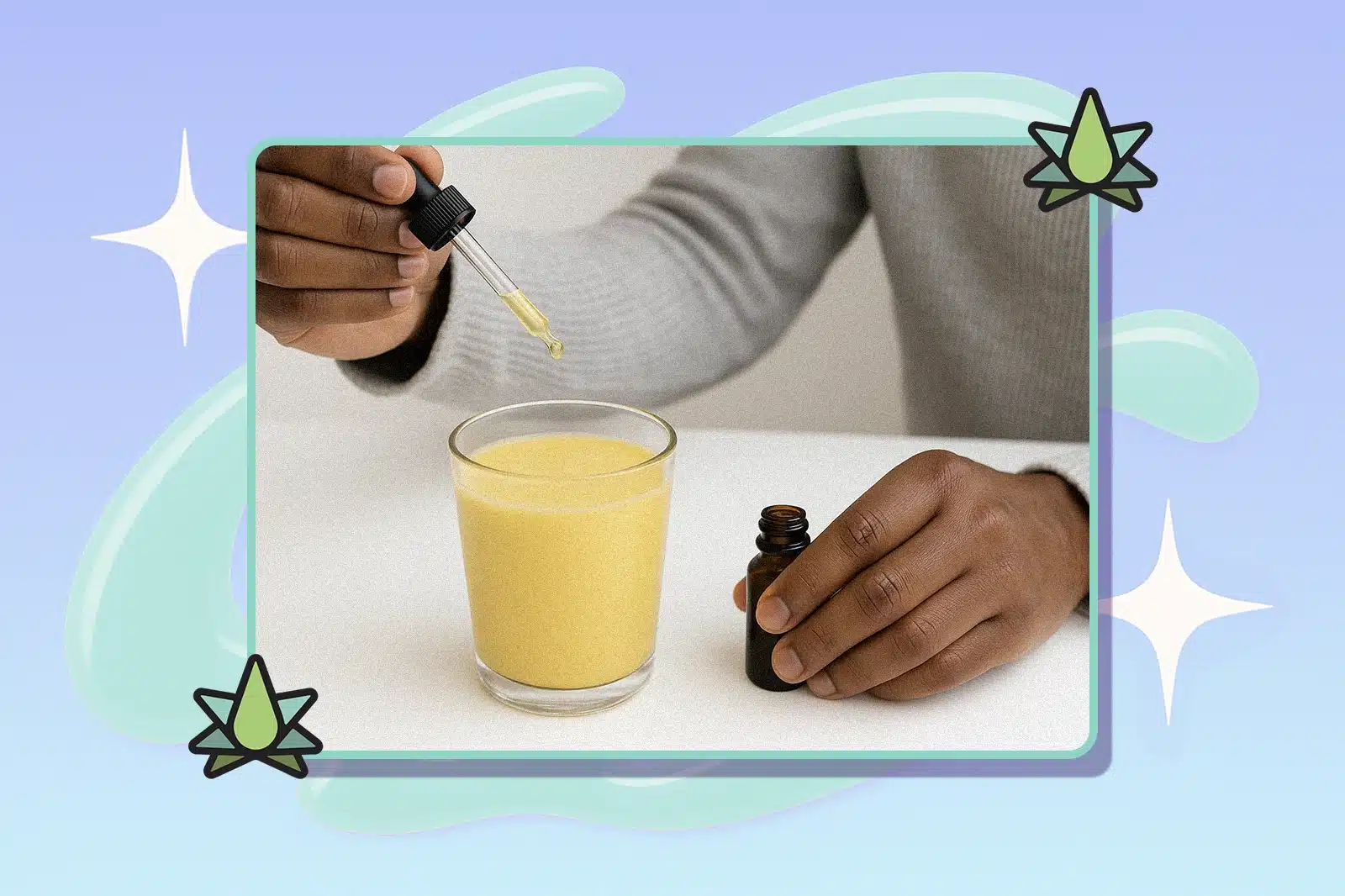
While terpenes offer significant product enhancement potential, their implementation requires careful adherence to safety guidelines and regulatory frameworks. These considerations vary by application type and jurisdiction.
Concentration Guidelines by Application
The following concentration guidelines reflect safety considerations and regulatory parameters across different product formats:
| Application Type | Typical Concentration Range | Primary Limiting Factor |
| Vaporization Products | 5-15% (w/w) | Hardware compatibility, sensory harshness |
| Sublingual Products | 0.5-2.0% (w/w) | Mucosal irritation potential |
| Edibles | 0.05-0.5% (w/w) | FDA GRAS limitations, sensory balance |
| Beverages | 0.01-0.1% (w/w) | Solubility limitations, flavor threshold |
| Flower Infusion | 1-4% (w/w) added | Absorption capacity, regulatory testing |
| Concentrates | 5-15% (w/w) | Product stability, sensory balance |
These guidelines should be adjusted based on specific regulatory environments, with international markets often imposing more stringent limitations than domestic applications.
Storage and Handling Protocols
Proper storage fundamentally impacts product safety and efficacy. Terpenes typically require specific handling protocols to maintain stability and prevent degradation:
Proper storage is essential for maintaining terpene integrity throughout the product lifecycle. To this end, temperature control is the most critical variable, with concentrated terpenes requiring temperatures below 4°C (39°F) to minimize oxidation reactions and prevent polymerization that leads to viscosity changes.
Oxygen exposure must be limited through nitrogen headspace in manufacturing environments or minimized headspace in smaller containers. Moreover, light protection using amber glass or opaque containers prevents UV-catalyzed degradation that can significantly alter terpene profiles.
Material compatibility cannot be overlooked. Terpenes should only come in contact with glass, high-grade stainless steel, or specific fluoropolymer plastics to prevent contamination and compound loss through absorption.
For manufacturing operations, implementing proper ventilation systems with a minimum of 10 air changes per hour prevents worker exposure to accumulated vapor. Similarly, establishing designated handling areas with appropriate safety equipment ensures regulatory compliance and personnel safety.
Our best practices for storing & using cannabis essential oils provide comprehensive guidance for establishing proper handling protocols across different operational environments.
Selecting the Right Terpene Products for Your Application
Choosing appropriate terpene inputs impacts everything from formulation compatibility to final product positioning. Understanding the key differences between terpene categories helps inform this selection process.
Cannabis-Derived vs. Botanical Terpenes
The source material for terpene extraction significantly impacts profile authenticity. Cannabis-derived terpenes (CDTs) extracted directly from Cannabis sativa L. plants provide the most authentic representation of strain-specific profiles as they contain the complete spectrum of compounds that define particular cultivars.
These native terpene profiles typically contain 60+ distinct compounds in strain-specific ratios, including minor terpenes and other volatile compounds that contribute to the entourage effect. This complexity creates formulation challenges, as these complete profiles sometimes demonstrate more reactive behavior in certain product matrices.
By contrast, botanical terpenes derived from non-cannabis sources offer increased formulation flexibility and improved stability characteristics. However, they may lack the complete aromatic complexity of cannabis-derived alternatives. Selecting between these categories should be guided by specific application requirements, such as:
- Premium Vaporization: Cannabis-derived terpenes deliver superior authenticity and sensory complexity
- Beverages: Botanical terpenes often provide improved solubility and integration characteristics
- Edibles: Application-specific selection based on thermal stability requirements and flavor targets
- Topicals: Botanical terpenes typically offer cost advantages
Consumer Perspective: DIY enthusiasts face the same challenge as commercial brands when selecting terpenes. Cannabis-derived terpenes offer the most authentic representation of specific strains, making them ideal for premium applications where capturing the exact character of a particular cultivar matters.
However, botanical terpenes offer excellent value while providing high-quality aromatic profiles for applications where price sensitivity is more important than perfect strain recreation. For many enthusiasts, cannabis-derived terpenes make the biggest difference in inhalation applications, while botanical options perform comparably well in topical or edible home projects.
Our article on terpenes vs cannabinoids provides additional insights to help consumers understand these complementary compound families.
Getting Started: Experimentation and Scaling Protocols
Successful terpene-enhanced product development typically follows a staged implementation process that minimizes risk while optimizing formulation parameters for specific applications.
Experimental Phase
Initial development should focus on small-batch testing to establish baseline parameters before committing to larger production runs.
Initial experimentation follows a systematic progression through four key phases. The process begins with profile selection, testing 3-5 distinct terpene profiles of multiple concentration levels to establish baseline performance characteristics.
This is followed by stability assessments, where formulations undergo accelerated condition testing under elevated temperature and light exposure to predict shelf-life performance.
Sensory benchmarking establishes descriptive profiles and preference patterns through structured evaluation protocols, creating a sensory baseline for larger production.
The final experimental phase involves analytical validation, confirming terpene retention rates and potential interactions with other formulation components that might affect the finished product.
Our terpene sample packs are an ideal starting point for this experimental phase. They offer curated selections of different profiles in sufficient volume for comprehensive testing across multiple formulation iterations.
Scaling Considerations
Transitioning from experimental batches to full production requires careful adjustment of several parameters to maintain consistent product quality.
Production scaling introduces multiple technical variables that require methodical adjustment to maintain product consistency. Mixing protocols need precise recalibration as volume increases, with timing parameters typically extending non-linearly with batch size to ensure complete integration.
Managing temperature is complex in larger batches, as thermal dynamics shift substantially from laboratory to production scales, requiring modified heating/cooling profiles to maintain ideal integration conditions.
Similarly, homogeneity validation is critical at scale, necessitating systematic sampling protocols to identify potential concentration gradients before final packaging. Equipment compatibility assessment must extend to all production surfaces, as certain materials that perform well in small batches may exhibit problematic interactions at production volumes and extended contact durations.
For manufacturers transitioning to larger-scale implementation, our Wholesale Program provides a consistent bulk terpene supply.
Conclusion: Optimizing Terpene Integration for Your Products
Successful terpene integration requires balancing scientific understanding with practical application knowledge. By following the technical guidelines outlined in this resource, product developers can create differentiated offerings that deliver consistent sensory experiences and functional benefits.
The optimal consumption method for any terpene application depends on specific product goals, target consumer expectations, and manufacturing capabilities.
Vaporization provides maximum bioavailability and sensory impact but requires careful hardware consideration. Edibles and beverages offer accessible formats with unique formulation challenges. Topical and sublingual applications provide specialized delivery for specific market segments with their own technical requirements.
When selecting terpene sources for formulations, distinguishing between cannabis-derived and botanical terpenes is particularly important. Each category offers distinct advantages for different applications. Our product catalog addresses this by providing authentic cannabis-derived options.
For product developers seeking to enhance existing products or create new terpene-enhanced offerings, beginning with structured experimentation using high-quality, consistent terpene inputs establishes the foundation for successful commercialization. Properly sourced materials eliminate confounding variables during formulation, creating a more efficient pathway to market-ready products.
The strategic implementation of terpenes is a significant opportunity for product differentiation. By applying the technical guidelines outlined herein and utilizing high-quality terpene inputs, manufacturers can create offerings that deliver consistent experiences while building brand loyalty.
Consumer Perspective: Whether enhancing personal products or simply looking to understand commercial terpene applications, the fundamental principles are similar across scales.
Use high-quality terpenes from reputable sources with proper documentation and storage guidance. Begin with conservative concentrations and precise measurements. Keep detailed notes on your experiments, as this helps refine future attempts. Most importantly, follow the safety guidelines outlined in this guide, as proper dilution and handling protocols are essential for quality results and personal safety.
Request terpene sample packs to begin your product development process with Terpene Belt Farms’ premium terpene profiles, supported by comprehensive technical documentation.
Sources Cited:
McGraw GW, Hemingway RW, et al. “Thermal degradation of terpenes: Camphene, Δ³-carene, limonene, and α-terpinene.” Environmental Science & Technology, 1999.
Qian Y, Zhang J, et al. “A critical review of terpene metabolism and terpene synthases.” Natural Product Reports, 2022. https://pubs.rsc.org/en/content/articlelanding/2022/np/d1np00066g
Ribeiro-Santos R, Andrade M, et al. “Biological activities of essential oils: From plant chemoecology to traditional healing systems.” Molecules, 2021. https://www.mdpi.com/1420-3049/26/13/3984
Sarker SD, Nahar L. “Chemistry for Pharmacy Students: General, Organic and Natural Product Chemistry.” John Wiley & Sons, 2013. https://www.wiley.com/en-us/Chemistry+for+Pharmacy+Students%3A+General%2C+Organic+and+Natural+Product+Chemistry-p-9780470017807
Russo EB. “Taming THC: potential cannabis synergy and phytocannabinoid-terpenoid entourage effects.” British Journal of Pharmacology, 2011. https://bpspubs.onlinelibrary.wiley.com/doi/10.1111/j.1476-5381.2011.01238.x
Booth JK, Bohlmann J. “Terpenes in Cannabis sativa – From plant genome to humans.” Plant Science, 2019. https://www.sciencedirect.com/science/article/abs/pii/S0168945219301190
Martínez-Pérez C, Ward C, et al. “Terpenes: Properties, Biosynthesis and Functional Role.” Nova Science Publishers, 2018. https://novapublishers.com/shop/terpenes-properties-biosynthesis-and-functional-role/
